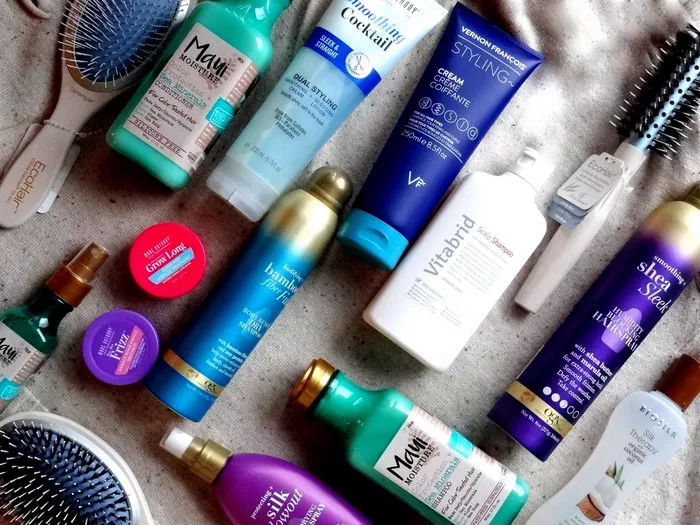In the realm of hair care, shampoos play a vital role in maintaining healthy and vibrant locks. However, amidst the plethora of ingredients found in these products, one compound has garnered attention for both its preservative properties and potential health risks: DMDM hydantoin. In this comprehensive article, we delve into the intricacies of DMDM hydantoin, exploring its role as a preservative, potential side effects, concerns regarding formaldehyde release, and providing insights into DMDM hydantoin-free alternatives.
Explanation of DMDM Hydantoin
DMDM hydantoin is a widely used antimicrobial preservative in cosmetics, including shampoos. Chemically, it belongs to the class of compounds known as formaldehyde releasers. Its primary function is to inhibit the growth of bacteria and fungi, thereby extending the shelf life of personal care products like shampoos. When incorporated into formulations, DMDM hydantoin gradually releases small amounts of formaldehyde over time, effectively preserving the product against microbial contamination.
Potential Effects
While DMDM hydantoin serves as an effective preservative, concerns have been raised regarding its potential side effects. One notable concern is its association with hair loss and skin irritation. Formaldehyde, a byproduct of DMDM hydantoin’s breakdown, has been linked to allergic reactions and contact dermatitis in sensitive individuals. Prolonged exposure to formaldehyde-releasing agents like DMDM hydantoin may exacerbate these reactions, leading to discomfort and adverse effects on scalp and skin health.
Moreover, some studies suggest a potential correlation between DMDM hydantoin and hair loss. Although the exact mechanism remains unclear, researchers hypothesize that prolonged exposure to formaldehyde may disrupt the hair growth cycle, resulting in thinning or excessive shedding. While the incidence of these side effects varies among individuals, consumers with sensitive skin or preexisting scalp conditions may be particularly susceptible to adverse reactions.
Formaldehyde Release
One of the primary concerns associated with DMDM hydantoin is its role as a formaldehyde donor. Formaldehyde, classified as a known human carcinogen by organizations such as the International Agency for Research on Cancer (IARC), poses significant health risks, especially upon prolonged or repeated exposure. When DMDM hydantoin decomposes in the presence of water, it releases formaldehyde molecules, which can subsequently come into contact with the skin and scalp during shampooing.
Exposure to formaldehyde has been linked to a range of health issues, including respiratory irritation, eye irritation, and allergic dermatitis. Additionally, long-term exposure to high levels of formaldehyde has been associated with an increased risk of certain cancers, such as leukemia and nasopharyngeal cancer. While the amount of formaldehyde released from DMDM hydantoin in shampoos is typically low and within regulatory limits, cumulative exposure from multiple sources of formaldehyde in personal care products may pose a concern for some individuals.
Product List
Despite the potential risks associated with DMDM hydantoin, it remains a common ingredient in many commercial shampoos. Here is a list of some popular shampoo brands and product lines that contain DMDM hydantoin:
1. Head & Shoulders Classic Clean Shampoo
2. Pantene Pro-V Daily Moisture Renewal Shampoo
3. TRESemmé Moisture Rich Shampoo
4. Herbal Essences Bio:Renew Repair Shampoo
5. Garnier Fructis Sleek & Shine Shampoo
While these shampoos may offer effective cleansing and conditioning benefits, consumers concerned about the presence of DMDM hydantoin may seek alternative options.
Alternatives
For individuals seeking DMDM hydantoin-free alternatives, a growing number of hair care brands offer formulations that exclude this preservative. These alternatives often feature natural or alternative preservatives, catering to consumers with sensitive skin or those seeking cleaner ingredient lists. Ingredients such as plant extracts, essential oils, and mild surfactants are commonly utilized in these formulations to provide effective cleansing and conditioning without the potential risks associated with formaldehyde-releasing agents.
Some DMDM hydantoin-free shampoo options include:
1. SheaMoisture Coconut & Hibiscus Curl & Shine Shampoo
2. Acure Mega Moisture Shampoo
3. Honest Company Purely Simple Fragrance-Free Shampoo
4. Burt’s Bees More Moisture Baobab Shampoo
5. Maple Holistics Argan Oil Shampoo
These alternatives offer consumers peace of mind by prioritizing ingredient transparency and minimizing exposure to potentially harmful compounds.
Expert Opinions
To provide further insights into the safety and use of DMDM hydantoin in shampoos, we turn to experts in cosmetic chemistry and dermatology.
Dr. Emily Johnson, a cosmetic chemist with expertise in product formulation, emphasizes the importance of balancing product safety with efficacy. She notes, “While DMDM hydantoin serves a crucial role in preserving the integrity of shampoos, it’s essential for consumers to be aware of potential sensitivities and opt for alternatives if necessary.”
Dermatologist Dr. Lisa Chen acknowledges the concerns surrounding formaldehyde exposure and its implications for skin and scalp health. She advises, “Individuals with sensitive skin or a history of allergic reactions should exercise caution when using products containing DMDM hydantoin. Opting for fragrance-free and hypoallergenic formulations can help minimize the risk of irritation.”
In conclusion, DMDM hydantoin plays a significant role as a preservative in shampoos, but its use raises valid concerns regarding potential side effects and formaldehyde exposure. Consumers are encouraged to weigh the benefits and risks, consider alternative formulations, and consult with dermatologists or cosmetic chemists for personalized recommendations. By prioritizing ingredient transparency and informed decision-making, individuals can make conscientious choices to support their hair and scalp health.
FAQs
How do I know if my shampoo has formaldehyde?
Formaldehyde is often not listed as an ingredient but may be present in some shampoos as a preservative or as a byproduct of other ingredients. Look for ingredients like formalin, formal, methylene glycol, or quaternium-15, which release formaldehyde.
Does Dove use DMDM hydantoin?
Dove shampoos do not typically contain DMDM hydantoin. Dove emphasizes using gentle and nourishing ingredients in their products, and DMDM hydantoin is more commonly found in other brands’ products.
How do I know if my shampoo has DMDM?
Check the ingredient list for DMDM hydantoin. It’s a preservative that releases formaldehyde, so if it’s listed, your shampoo contains DMDM.
Does Dove shampoo have formaldehyde?
Dove shampoos usually do not contain formaldehyde as an added ingredient.
Does Garnier shampoo have DMDM?
Some Garnier shampoos may contain DMDM hydantoin as a preservative. Check the ingredient list to be sure.


